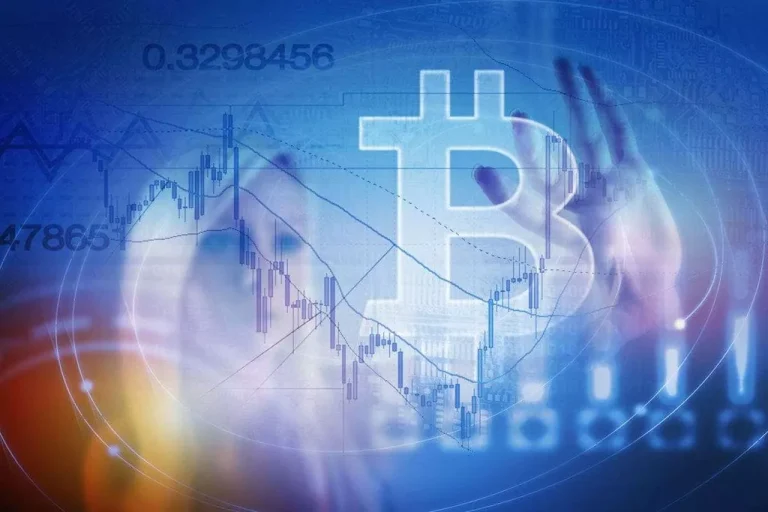Content
This immutability enhances trust in the payment system, as participants can rely on the accuracy and permanence of the transaction history. A seamless integration ensures that business operations remain efficient while offering users additional transaction options through blockchain. Rather than posing an obstacle, blockchain should complement and strengthen your workflows, enabling your organization to showcase improved performance. Microtransactions, https://www.xcritical.com/ or micropayments, are minor online financial transactions, typically involving sums of a few dollars or less.
What are the benefits of using blockchain in payments?
Through the decentralized blockchain network, individuals can blockchain payments carry out peer-to-peer (P2P) transactions, eliminating the need for intermediaries such as banks. This not only eradicates additional fees but also guarantees quicker and more efficient transfers. Blockchaintechnology has received considerable attention in recent years, owing mostly toits relationship with cryptocurrencies such as Bitcoin.
Companies Using Blockchain Payments to Send Your Money
Decentralized finance (DeFi) platforms, built on blockchain technology, offer a range of financial services, such as lending, borrowing and asset management, without the need for traditional intermediaries like banks. By lowering barriers to entry and providing cost-effective solutions, DeFi platforms can help bridge Financial cryptography the gap between the banked and unbanked populations, fostering greater financial inclusion and economic development. Giordano explained that blockchain integration could address long-standing inefficiencies in finance, reducing reliance on intermediaries and thus lowering transaction costs.
To Ensure One Vote Per Person, Please Include the Following Info
The decentralized attribute of blockchain further bolsters security, making it an optimal solution for seamless, trustworthy transactions. No intermediaries means no extra charges or delays, making it easy to transfer funds between countries. Plus, transactions happen almost instantly, which is perfect for today’s fast-paced global economy.
What is a blockchain payment system?
For example, platforms like Marco Polo leverage blockchain to offer faster, more transparent and secure trade finance solutions. The adoption of blockchain in trade finance will likely foster increased collaboration among trading partners. Considering the aforementioned blockchain payment systems and solutions, it is clear that this technology offers numerous benefits. The most significant are a higher level of payment security, improved transaction transparency, increased speed of payment execution, and enhanced cost efficiency. More than 175 banks and commercial platforms use the company’s RippleNet platform for cross-border payments.

Consequently, this leaves no room for anyone to engage in corrupt practices or financial mismanagement without detection. Blockchain serves as the foundational technology in crypto payments, playing a vital role in maintaining transactional security and reliability. It applies cryptographic principles to authenticate transactions, embedding an additional layer of trust and integrity within digital payments. Blockchain is,at its heart, a distributed ledger that records transactions across severalcomputers called as nodes.

For Sri Lanka, where small businesses play a vital role in the economy, embracing blockchain can be a game-changer. With the global blockchain supply market estimated at USD 2.26 billion in 20231, it’s clear that this technology is gaining traction, and its importance in helping businesses streamline operations and enhance trust cannot be overstated. Blockchain technology could redefine traditional financial processes, according to Paul Giordano, vice president of digital assets at MARA.
As transaction volumes increase, public blockchains can become congested and experience slower transaction processing times. Addressing scalability requires implementing solutions such as off-chain transactions, sharding, or layer-two scaling solutions to handle a larger number of transactions efficiently. Practical applications span various industries, including digital payments, supply chain management, remittances, and micropayments. Blockchain payment systems facilitate micropayments and peer-to-peer transactions with minimal fees. Blockchain payment systems offer enhanced transparency and traceability in supply chain management. Blockchain payment systems offer a plethora of advantages over traditional payment methods, disrupting the financial landscape in several ways.
It operates on a peer-to-peer network where every participant, or node, has a copy of the entire ledger. Blockchain enables micropayments, or, in other words, transactions involving minimal amounts of money. This can underpin business models that rely on small but steady contributions from consumers.
Payments can be handled in minutes or evenseconds using blockchain, regardless of geographical boundaries or bankinghours. Stellar’s blockchain payment platform fights poverty by connecting people and low-cost financial institutions. The Stellar network features lower remittance costs, mobile banking, real-time settlements (in two to five seconds) and an automatic currency exchange. Consulting giant Deloitte uses Stellar to test out different payment methods for banking clients outside North America.
The blockchain payment system development process requires an experienced and skilled team. Therefore, you have to assemble a group of professionals, comprising blockchain developers and consultants, project managers, and business analysts, who are adept in blockchain technology, smart contracts, and secure coding practices. However, blockchain technology can mitigate this by introducing decentralized transactions, eliminating the need for multiple intermediaries, and speeding up the process.
Interoperability between different blockchain networks and traditional payment systems can be a challenge. Ensuring compatibility and seamless integration with existing infrastructure, such as legacy payment systems, is crucial to foster wide-scale adoption. Standardization efforts and collaboration between different blockchain platforms and payment service providers are necessary to overcome interoperability hurdles. Educating users about the benefits and functionality of blockchain-based payments is important for widespread adoption. Overcoming the learning curve and ensuring a seamless user experience will be critical to gaining acceptance and encouraging users to transition from traditional payment methods to blockchain-based solutions.
With our expertise in shipping and logistics management, we can help you leverage the power of blockchain to optimize your supply chain and enhance your business operations. Blockchain technology can significantly enhance the customer experience by improving transparency, security, and efficiency in various business processes. In logistics, this means that information about a shipment’s journey is shared across the entire ecosystem, from the point of origin to the final destination. This shared visibility builds trust among participants, reduces the risk of fraud or tampering, and facilitates smoother and more efficient supply chain management. Real-time payments, already commonplace in many geographies, are gaining ground in the US. Point-of-sale lending and buy-now-pay-later financing solutions are reimagining lending and upending the POS experience.
- Blockchain spreads transaction data across many computers, making crypto transactions resilient to single points of failure.
- PayPal, an online platform for global transactions, supports the transfer of Bitcoin, Bitcoin Cash, Ethereum and Litecoin.
- For Sri Lanka, where small businesses play a vital role in the economy, embracing blockchain can be a game-changer.
- Consequently, the income for tax purposes is based on the Canadian dollar value of the purchased goods or services, not the virtual currency value.
- Touchless payments and fears of potentially contaminated cash led to a sharp increase in the share of digital payment methods in total GDP across the globe.
This implies identifying the challenges in your current payment system that blockchain has the ability to solve, such as high transaction costs or long processing times. Implementing blockchain in payment systems is a complex task that requires businesses to pay close attention to various details. In the following section, we will examine the critical steps necessary for successfully integrating blockchain into your payment processes.
Our team of reviewers are established professionals with decades of experience in areas of personal finance and hold many advanced degrees and certifications. At Finance Strategists, we partner with financial experts to ensure the accuracy of our financial content. Research and development efforts are focused on developing more energy-efficient consensus algorithms and promoting the use of renewable energy sources to mitigate these concerns. Solutions such as sharding, layer-two protocols, and optimized consensus algorithms are being explored to enhance scalability. I agree to the Privacy Policy and give my permission to process my personal data for the purposes specified in the Privacy Policy.
